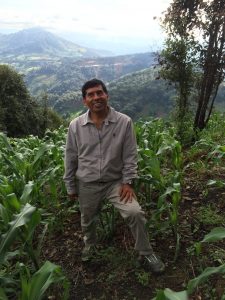
There’s a long drive ahead. We are going to El Tepeyac, an isolated village hundreds of kilometres away in the mountains of Guerrero state. It’s home to an indigenous Me’phaa community (often called Tlapaneco by outsiders), one of Mexico’s poorest. “They have been forgotten,” says Mosso. “They live with cold, on top of the mountain. They don’t have hospitals, clinics, nothing.”
As the high-rise blocks of Mexico City give way to sprawling shanty towns and then forested mountains, Mosso tells me about his father, Victorio. He was born close to El Tepeyac but left when he was 13, eventually becoming a teacher near Acapulco. He returned briefly to his childhood home after getting married, but never visited again until Mosso took him 40 years later. They found Victorio’s youngest brother, Faustino. At first, neither brother recognised the other. “They said ‘You look too old!’” recalls Mosso. “Then they were hugging, crying, a lot of emotions. It was the first time I saw my father cry.”
Mosso was shocked by the poverty he saw, with dwellings that he felt could barely be described as houses. The villagers asked him to examine a patient, an old woman with a fever who was lying in a puddle on the floor (there had been a recent flood, and it was the only place close to the fire). She had pneumonia; Mosso told them there was nothing he could do. “She was my aunt,” he says. “It was the last time I saw her. She died a few weeks later.” He pauses, eyes fixed on the road. “That’s why I go back. Because of my aunt.”
This excerpt is from “Virtually painless: How VR is making surgery simpler”, my article for Mosaic. To read more (it’s free), click here: https://mosaicscience.com/story/virtual-reality-VR-surgery-pain-mexico

Leave a Reply